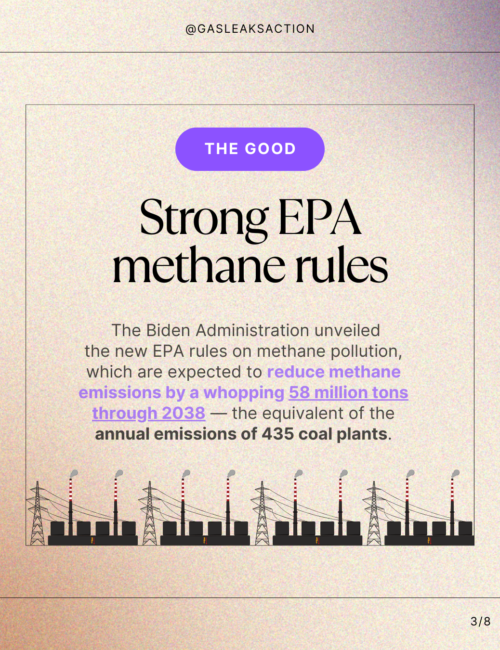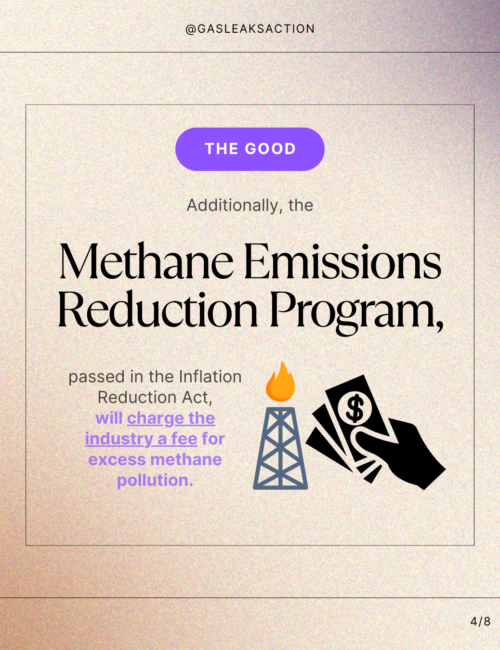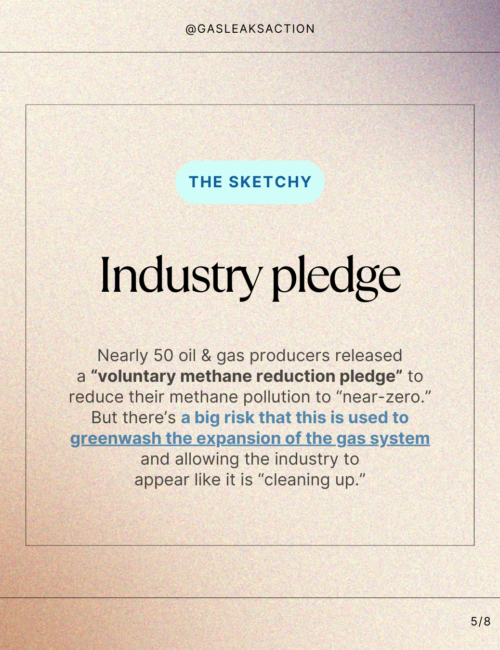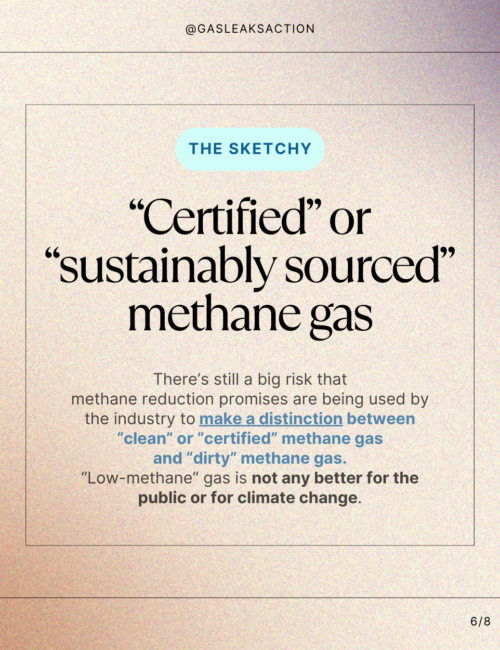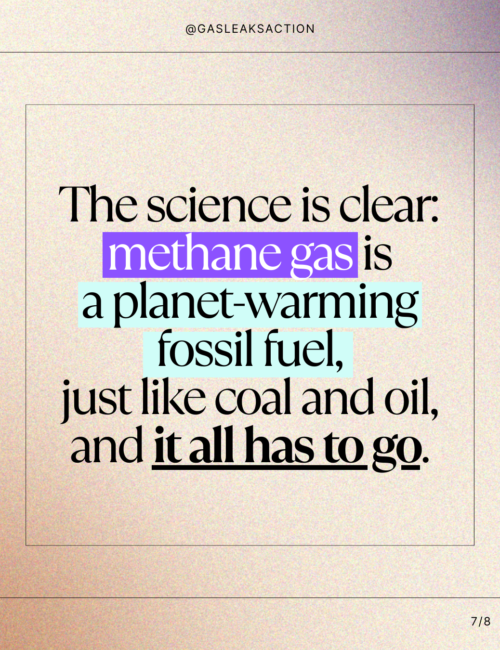Methane’s moment: Climate talks bring progress & gas greenwashing risks

The biggest international climate meeting of the year wrapped up last week, and methane pollution from the oil and gas industry was finally front and center in the discussion.
The United Nations annual Conference of the Parties (COP) meeting in Dubai ended with an important commitment for countries to “transition away from fossil fuels” but troubling language that touted “natural” gas as a “transition fuel.” And both the fossil fuel industry and governments agreed on the need to address methane pollution from fracking and pipelines, but left out vital details about how that would be achieved.
The renewed attention presents a key opportunity to finally address the methane problem — a non-negotiable step to avoid the worst climate change outcomes, protect public health and address environmental injustice. But translating headlines and pledges into genuine progress is going to require continued vigilance and accountability from governments and community advocates.
The Good: strong EPA methane rules
After years of work, the Biden Administration unveiled new Environmental Protection Agency rules on methane pollution from the oil and gas industry. These are the most tangible policy changes on the methane front ever, and are expected to reduce methane emissions by a whopping 58 million tons through 2038 — the equivalent of the annual emissions of 435 coal plants.
For years the industry has faced little to no consequences for dumping methane straight into the atmosphere, supercharging global warming and polluting nearby communities. That will change with the implementation of this rule and a related Methane Emissions Reduction Program, which passed in the Inflation Reduction Act and charges the industry a fee for excess methane pollution.
Crucially, the EPA rules preserve a role for community members who live near fracking or pipelines to report major methane pollution events, a provision which the fossil fuel industry has fought against.
But much work remains to be done to ensure that the EPA rules are effective. Legal challenges from industry are likely. And individual states will be tasked with ensuring the industry is following the rules and taking steps to prevent methane pollution events. It’s vital that rules be enforced — just one single methane leak at at Pennsylvania storage facility in 2022 wiped out the climate benefits of half the electric cars sold in the United States in 2021.
The Sketchy: “Certified” gas and industry greenwashing
Industry pledge
Around the same time as the EPA methane rule, nearly 50 global oil and gas producers released a “voluntary methane reduction pledge” to reduce their methane pollution to “near-zero.”
Voluntary pledges without consequences aren’t legally binding, and there’s a big risk that this pledge is used to greenwash the continued expansion of the gas system — allowing the industry to appear like it is “cleaning up” the gas system instead of phasing it out like the science demands. Crucially, the pledge contained no accountability measures, and it left out pollution from the burning of gas, which is growing at a rapid pace.
More than 300 civic groups at COP signed onto a joint letter on why voluntary pledges aren’t an alternative to tangible plans to stop the expansion of the use of methane gas:
“Methane emissions and gas flaring are symptoms of a more than century-long legacy of wasteful, destructive practices that are routine in the oil and gas industry as it pursues massive profits without regard for the consequences. That the industry, at this crucial moment in the climate emergency, is offering to clean up its mess around the edges in lieu of the rapid oil and gas phase-out that is needed is an insult to the billions impacted both by climate change and the industry’s appalling legacy of pollution and community health impacts.”
“Certified” or “sustainably sourced” methane gas
There’s still a big risk that methane reduction promises are being used by the industry to make a distinction between “clean” or “certified” or “differentiated” methane gas and “dirty” methane gas. The science is clear: all methane gas is a planet-warming fossil fuel just like coal and oil, and it all has to go if we’re serious about avoiding climate disaster. Efforts to paint gas as “clean” is the next chapter in the industry’s decades-long campaign to mislead the public about the harms of their product.
This summer, the Department of Energy backed away from plans to set a standard for what level of emissions reductions qualify as “certified” gas, following the launch of the Certified Disasters campaign by Gas Leaks, Climate Nexus, Earthworks and Oil Change International. Despite that assurance, media reports suggest that Biden Administration officials still used COP to pursue policies aimed at normalizing the concept of “low-methane” gas, paving the way for more gas export projects that pollute frontline communities and raise energy prices for US families.
“The Energy and State departments are working with the European Union — the world’s largest gas importer — and with other countries on international standards that will give low-methane gas preferential access to the EU market.”
“Low methane” gas isn’t any better for the public than low-tar cigarettes. It’s vital that efforts to address methane pollution don’t distract from the need to phase out the use of gas by handing the industry a public relations win in their efforts to keep making us more dependent on their polluting product.



